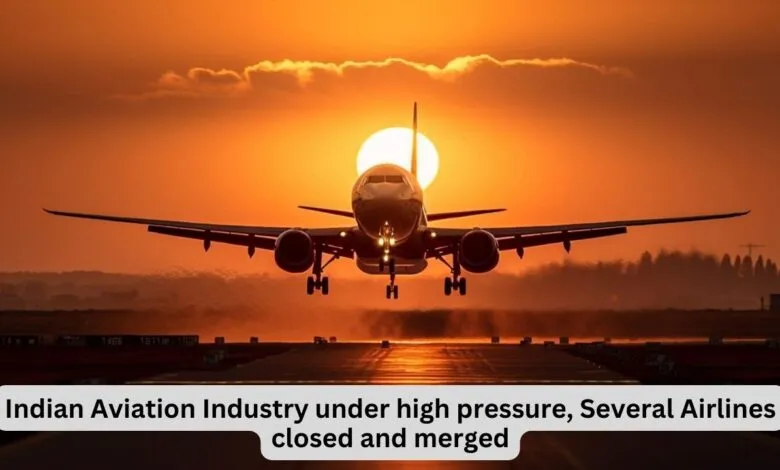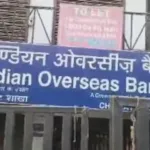
Indian Aviation Industry: Over the past two decades, India’s aviation industry has seen an incredible journey marked by high-profile mergers, buyouts, and a wave of bankruptcies. Between 2006 and 2024, approximately ten airlines went out of business, while five were acquired by competitors. Despite the industry’s potential, a mix of economic challenges, high operating costs, and fierce competition have led to a cycle of consolidation and collapse. Let’s explore some key moments that shaped the current state of Indian aviation. Click here to read more news related to Bank Mergers.
Mergers and Acquisitions in Indian Aviation
India’s aviation landscape has been defined by a series of major mergers and acquisitions as companies sought to expand market share, streamline operations, and tackle financial troubles. However, these mergers often brought additional hurdles, such as integration challenges, cultural clashes, and significant operational costs.
1. Indian Airlines and Air India (2007)
- Background: In an ambitious move to create a global competitor, the government merged two state-owned carriers, Indian Airlines and Air India, in 2007.
- Challenges: The merger faced bureaucratic obstacles, cultural differences, and a series of operational inefficiencies that plagued the newly formed airline. Internal conflicts and redundant processes made it difficult for the merged airline to operate effectively, leading to years of financial strain. Click here to read more news related to Markets.
2. Air Sahara and Jet Airways (2007)
- Overview: Jet Airways acquired Air Sahara in a landmark buyout, rebranding it as JetLite. The move was part of Jet’s strategy to strengthen its foothold in the domestic market.
- Outcome: Despite the buyout, Jet Airways ultimately could not sustain itself financially, ceasing operations in 2019 and going into bankruptcy. JetLite, along with its parent airline, was liquidated, marking a major collapse in Indian aviation.
3. Air Deccan and Kingfisher Airlines (2007)
- Merger Details: Kingfisher Airlines acquired Air Deccan, a budget carrier, rebranding it as Kingfisher Red to cater to a more cost-sensitive market while expanding its premium offerings.
- Result: Kingfisher’s aggressive expansion strategy proved unsustainable, and it failed to handle the financial burden. In 2012, both Kingfisher Airlines and the rebranded Kingfisher Red shut down, symbolizing the risks of rapid, unchecked growth.
4. AirAsia India and Air India Express (2024)
- Consolidation Strategy: After the Tata Group acquired Air India, it decided to merge AirAsia India (renamed AIX Connect) with Air India Express, consolidating its low-cost operations under one umbrella.
- Purpose: This merger aimed to optimize operations within the group and leverage economies of scale. It marked the Tata Group’s commitment to expanding and streamlining its presence in Indian aviation.
5. Vistara and Air India (2024)
- Expansion Move: Vistara, a joint venture between the Tata Group and Singapore Airlines, merged with Air India to enhance Tata’s competitive advantage.
- Reasoning: Vistara had incurred losses since inception, and Singapore Airlines acknowledged the challenges of operating as an independent brand. Singapore Airlines holds a 25.1% stake in the merged entity, solidifying its partnership with the Tata Group.
High-Profile Airline Shutdowns
In addition to mergers, the Indian aviation sector has witnessed a wave of shutdowns as carriers struggled with rising fuel costs, operational expenses, and competitive pricing pressures. Here are some of the most prominent closures:
1. Kingfisher Airlines (2012)
- Legacy: Known for its premium services and luxury, Kingfisher Airlines was initially successful. However, its expansion led to significant debt and management issues.
- Closure: The airline’s financial instability resulted in one of the most dramatic collapses in Indian aviation. Mounting debts and operational struggles forced Kingfisher to shut down in 2012, marking the end of its luxurious service offerings.
2. GoFirst (2023)
- Background: Previously known as GoAir, GoFirst faced substantial financial difficulties that worsened due to Pratt & Whitney engine supply issues, grounding much of its fleet.
- Bankruptcy Filing: In 2023, the airline filed for bankruptcy after failing to overcome its financial challenges, ceasing operations and becoming another casualty of India’s tough aviation market.
3. Jet Airways (2019)
- Rise and Fall: Jet Airways was once the largest private airline in India, offering domestic and international services. However, liquidity issues and a failed funding search forced it to halt operations in 2019.
- Impact: With over 16,000 employees and a large fleet, Jet’s collapse was a major blow to the Indian aviation sector, highlighting the volatility in the industry.
Regional Airline Shutdowns
While major players struggled, smaller regional airlines faced even greater challenges, often succumbing to financial pressures, regulatory hurdles, and intense competition from larger carriers. Here’s a look at some regional airlines that ceased operations over the years:
- Paramount Airways (2010): A regional carrier that struggled to become profitable due to high operational costs and ceased operations in 2010.
- Air Costa (2017): This airline, focusing on South India, halted operations in 2017 after being unable to achieve financial stability.
- Air Pegasus (2016): Operating out of South India, Air Pegasus suspended services in 2016 due to financial troubles.
- Air Carnival (2017): A Chennai-based regional airline that lasted only two years, shutting down in 2017 due to limited capacity and intense competition.
- Mantra (2017): A regional player focusing on routes in southern and western India, Mantra couldn’t withstand market pressures and ceased operations.
- TruJet (2023): Operating in southern India, TruJet shut down in 2023 after failing to recover post-pandemic.
- Air Odisha (2021): This regional airline, which served smaller cities, suspended operations as the pandemic exacerbated its financial issues.
Challenges Facing Indian Aviation
The turbulence in India’s aviation industry highlights several underlying issues:
- High Operational Costs: India has some of the world’s highest operating costs for airlines, driven by factors like taxes on Aviation Turbine Fuel (ATF), airport charges, and aircraft leasing expenses.
- Supply Chain Constraints: Supply chain issues have impacted fleet expansion and maintenance, limiting capacity and hindering growth.
- Competitive Pricing Pressures: With both full-service and low-cost carriers in the market, competition on ticket prices has strained profitability.
- Impact of COVID-19: The pandemic intensified financial pressures on airlines, forcing some to seek bailouts or cease operations entirely.
Looking Ahead
India’s aviation industry remains a dynamic and promising sector, with considerable growth potential given the country’s large population and expanding middle class. However, the need for sustainable financial practices, favorable government policies, and an emphasis on operational efficiency will be crucial as airlines navigate these persistent challenges. The future may continue to see consolidation as companies aim to establish stable, resilient business models in one of the world’s fastest-growing aviation markets.






